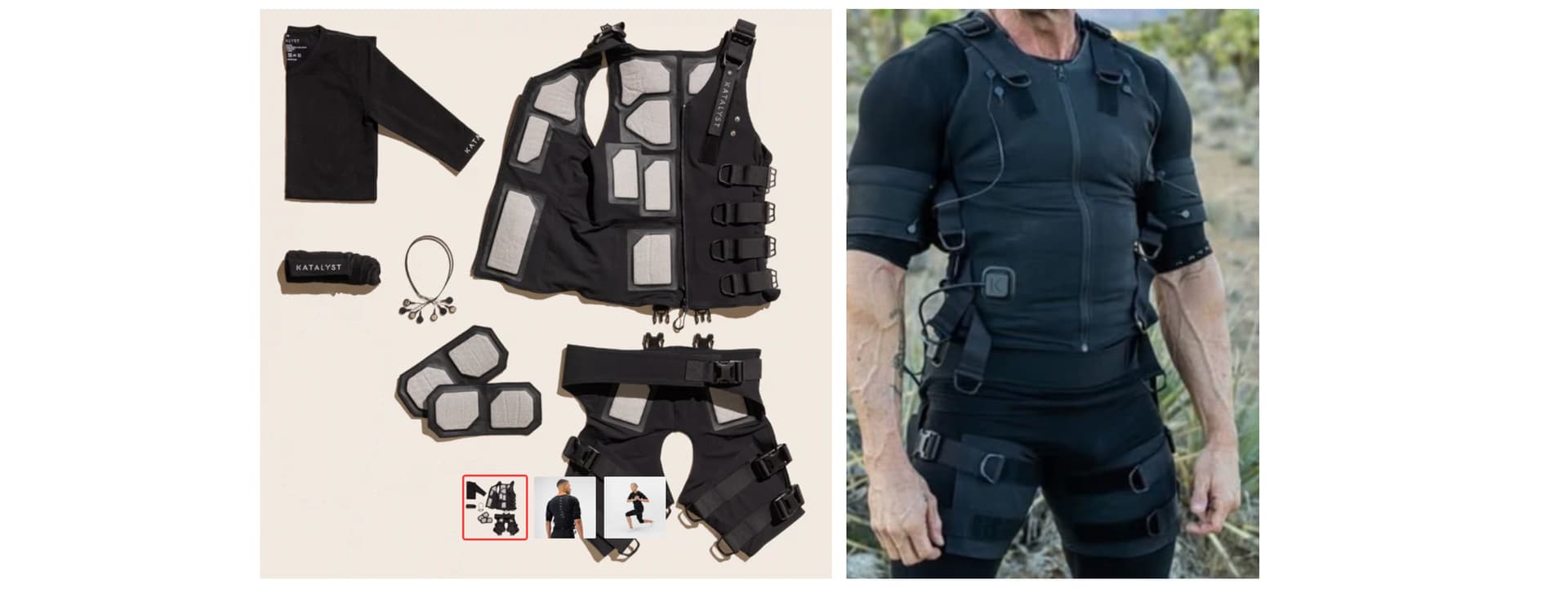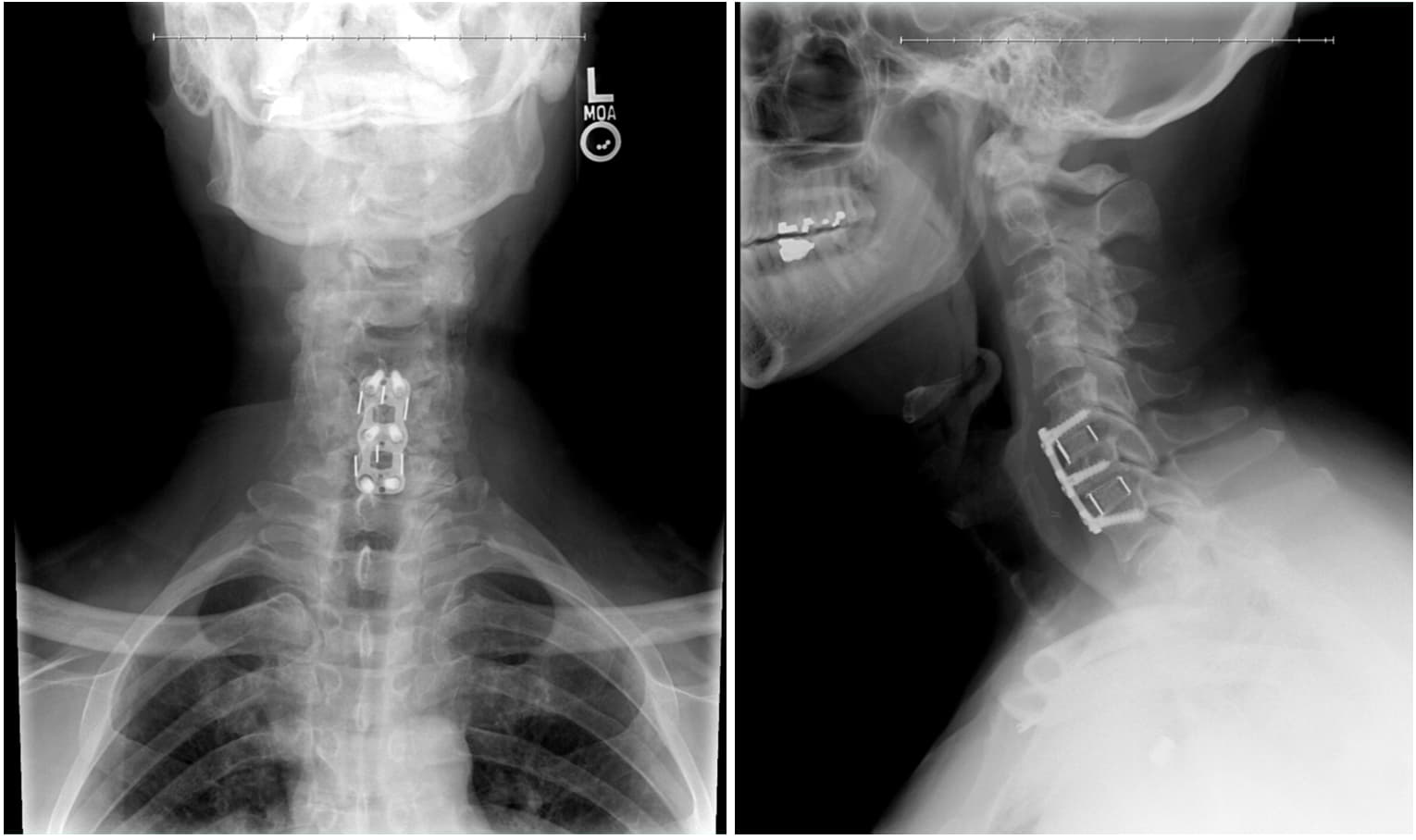My surgery
21 November
Hospital for Special Surgery
NY, NY
Scheduling
The day before surgery, I received a call from the surgical scheduling team telling me to get to the hospital at 5:30 AM 21 Nov.
I said, “No”. No way I would go into a surgery with a sleep deficit.
Someone got back to me an hour later with a new time of 10:45 AM.
The night before the surgery I had the best sleep (as measured by my Oura ring) that I’d had in 6 months.
I highly recommend that you get as much high quality sleep as possible leading into the surgery.
The glitch
I went in thinking they only needed to do C5 & C6. When I arrived for my pre-op screening and check in, I learned that they had a procedure scheduled to fuse C5, C6, and C7.
I asked that they review the plan.
This stopped everything until my surgeon rechecked my imaging and his plan for the procedure.
He came to me personally, cleared up confusion, and apologized for not making it explicitly clear.
The procedure proceeded
Once wheeled into the operating room and placed on the table, someone injected me and I didn’t even get to count backwards from 10.
Recovery room
I approached consciousness (but just barely) several hours later in the recovery room. They had let my wife in to see me as I wouldn’t get moved to my room until after visiting hours.
I learned later they still had tubes in me and I had splattered blood on my face and forehead. Gave her a fright. My wife, a formidable and stoic ferocious sort, burst into tears when I called her the next morning.
Hadn’t seen that in almost 30 years together. Kind of sweet.
Overnight
I finally woke up probably around 10 PM as the nurses started coming in every hour to check vitals and administer medications and fluids.
I don’t think the anesthesia wore off until well into the middle of the night, maybe 3 am or 4 am.
Not certain what else they pumped into me over night.
No pain though.
Next day
They had me up to walk to the toilet.
They brought me soft food, think baby food.
The surgery I had moves things around and causes pretty significant swelling in the neck making it very difficult to swallow. Not easy to talk either.
Waking me every hour continued through the day.
Pain became a thing. I felt beat up. Somehow even my tail bone hurt, maybe they dropped me. Oxycodone + Tylenol + Muscle relaxers helped.
In the afternoon the release process began. I got seen by PAs, PTs, my surgeon, and a few others.
They had me walking up and downtime halls of the hospital as well as up and down stairs. Reviewed how to move and how not to move.
The nerve pain in my fingers (a near constant prior to surgery) went away.
I still had something like nerve pain that I experience through the front of my left shoulder.
This surprised my surgeon, he expected I’d feel something at the back of my shoulder, but didn’t find it out of scope of expectations.
I became aware of other things.
To sleep at all the first night I had the hospital bed raised at about a 40 degree angle.
I also found that I only needed a minimal pillow.
Prior to surgery I had all manner of wedges and cervical pillows because I needed to bend forward to relieve the constriction of the nerves.
This has changed.
The new constriction in my throat also affected normal draining of my sinuses so it felt like I had a cold.
This continues to affect me eleven days after surgery.
My surgeon also advised that the traction of C5, C6 and C7, stretched a set of nerves that he described as encompassing a diamond spanning from the top of my neck to each shoulder and then to the middle of my back.
He said I could expect pain and discomfort for a while, but that the nerves would calm down over time.
They took the X-rays posted above to check that everything looked right and released in the late afternoon.
Extraordinary hospital. Extraordinary staff. All focused on the best outcome for their patients.
First week home
I stayed on Oxycodone + Tylenol + Muscle relaxers for most of the first week.
One typically needs to take Senna with Oxycodone to offset its constipating effect.
I take copious quantities of resistant starch and fiber, so I didn’t have an issue with this.
Eleven days out and I still can’t swallow easily. All food mushed up or semi liquified.
Still difficult to swallow pills.
One needs to stay mindful of how one moves. It takes a long time for the vertebrae to fuse and until they do, one needs to restrict movement and activities.
How much and what kind remain questions I’ll take up during my follow up in another week.
My legs still work. My arms still work. Most of body can still bend. My brain still works
Sleep
I give sleep its own section heading. The combination of the surgical intervention and drugs wrecked my sleep and disturbed my dreams.
I wake up every hour.
Not certain if the medications act as diuretics.
Certainly sinus drainage contributes to the disturbed sleeping.
I found that having my bed raised at a 20 to 25 degree angle with a bolster under my knees helps. Both lower and higher angles make it worse. Sitting up ok on the sinuses but impossible for sleeping.
A new pain
10 days post surgery I woke up with an intense muscle spasm in the lower right of my back - a more intense and acute pain then anything since surgery.
Not certain why but I think going from doing active HIT strength and mobility work plus lots of walking to not, may have contributed to this.
I don’t feel like I can get down on the floor and stretch.
I don’t think using a massage gun makes sense yet.
Possibly dehydrated?
Possible reaction to the medications leeching away electrolytes?
Bone growth stimulation
Prior to my procedure I had asked my surgeon if he had experience using PEMF to accelerate recovery. This led us to a discussion he clearly doesn’t have with all of his patients.
He recognized the uses of PEMF and advised that he had some patients use the Biomet SpinalPak
device.
He arranged for me to work with a company representative. Who clearly thinks using the device can exceed the published results.
Biomet SpinalPak: a non-invasive electrical bone growth stimulator** (capacitive coupling) that delivers a very low-level electrical field across the fusion site.
-
Designed to deliver 270 days of continuous therapeutic treatment for 24 hours per day
-
recommended daily therapeutic treatment: continuous for 24 hours (except when bathing/showering, etc.).
The SpinalPak increases the probability of a solid fusion**, especially in higher-risk situations (age, multilevel fusion, prior nonunion, smokers, etc.)
A key nuance:
- The published data and coverage policies support better fusion rates (fewer non-unions),
- They do not give a reliable “time savings factor” (e.g., “24-hour wear cuts healing time from 12 months to 6”).
So:
- Using it 23–24 hours/day maximizes your chance of a strong fusion.
- It might tilt things toward the earlier end of the usual bone-healing window.
- It does not realistically turn a 12-month biologic process into a guaranteed 3–4-month finish line.
Medicare covers the device in full.
How long until you’re “as good as you’re going to get?
For me, a 73-year-old with a multilevel C5–C7 ACDF:
Typical (very broad) expectations without a stimulator:
-
3–6 months: early bone bridging, gradual symptom improvement; activity level expands slowly.
-
9–12+ months: fusion often considered “solid” on imaging; you’re getting close to your long-term functional baseline.
-
Up to 12–18 months: nerves and soft tissues can still adjust, so small improvements can continue even after the fusion itself has matured.
With SpinalPak used as directed (near 24 hrs/day):
- Your odds of achieving a solid fusion go up.
- Your surgeon might see convincing fusion toward the earlier side of that 9–12-month window.
- But there’s no good evidence that even perfect 24-hour compliance lets anyone confidently say, for example, “You’ll be fully ‘as good as you get’ at 6 months instead of 12.”
Your overall “how good one gets” also depends on:
- Pre-existing nerve damage
- Spinal cord/nerve recovery (which is slow and stimulator-independent)
- General conditioning, posture, PT, comorbidities, etc.
Follow up with my surgeon 9 Dec
So much to discuss.


